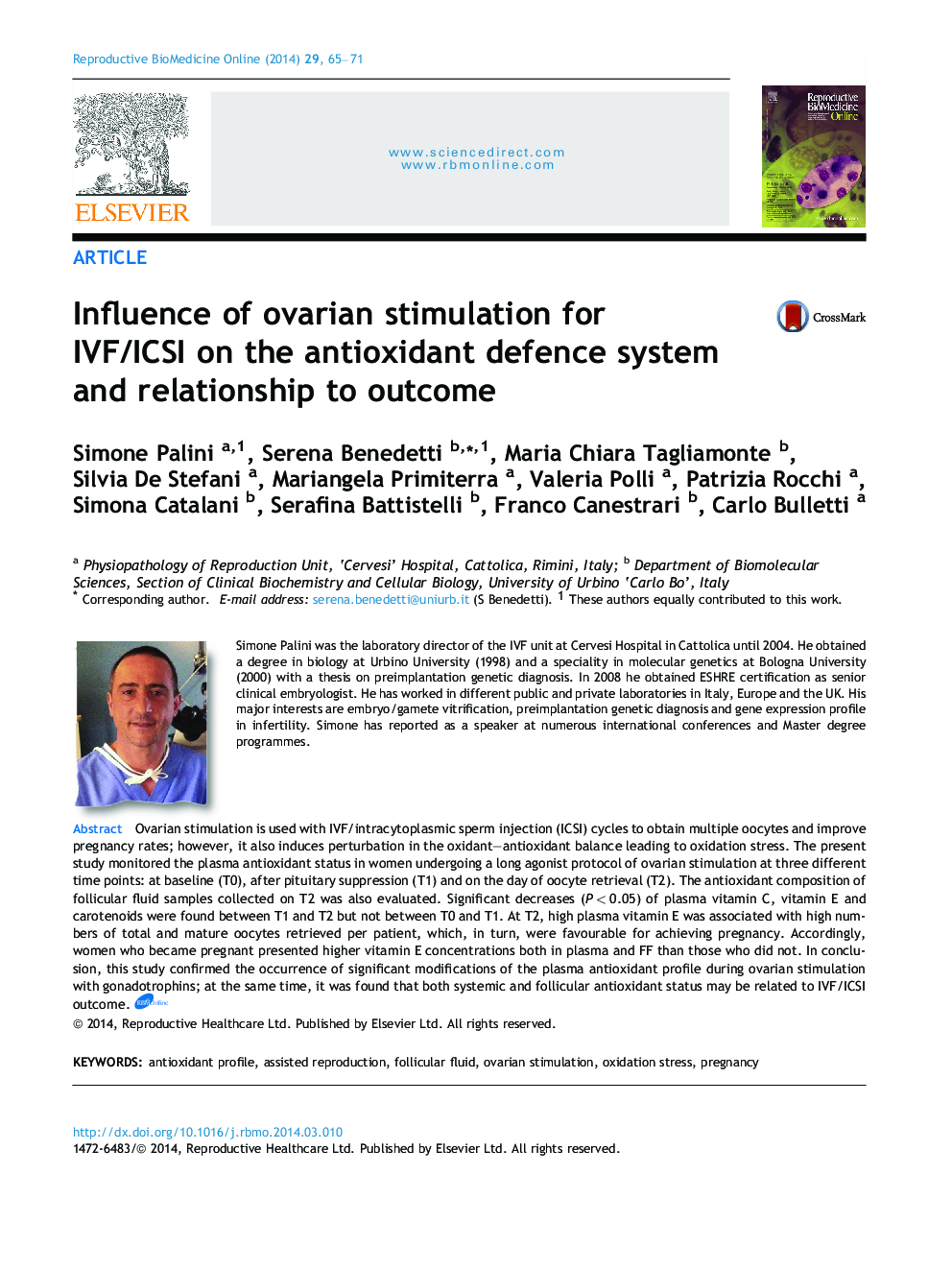| Article ID | Journal | Published Year | Pages | File Type |
|---|---|---|---|---|
| 3970141 | Reproductive BioMedicine Online | 2014 | 7 Pages |
Ovarian stimulation is used with IVF/intracytoplasmic sperm injection (ICSI) cycles to obtain multiple oocytes and improve pregnancy rates; however, it also induces perturbation in the oxidant–antioxidant balance leading to oxidation stress. The present study monitored the plasma antioxidant status in women undergoing a long agonist protocol of ovarian stimulation at three different time points: at baseline (T0), after pituitary suppression (T1) and on the day of oocyte retrieval (T2). The antioxidant composition of follicular fluid samples collected on T2 was also evaluated. Significant decreases (P < 0.05) of plasma vitamin C, vitamin E and carotenoids were found between T1 and T2 but not between T0 and T1. At T2, high plasma vitamin E was associated with high numbers of total and mature oocytes retrieved per patient, which, in turn, were favourable for achieving pregnancy. Accordingly, women who became pregnant presented higher vitamin E concentrations both in plasma and FF than those who did not. In conclusion, this study confirmed the occurrence of significant modifications of the plasma antioxidant profile during ovarian stimulation with gonadotrophins; at the same time, it was found that both systemic and follicular antioxidant status may be related to IVF/ICSI outcome.
